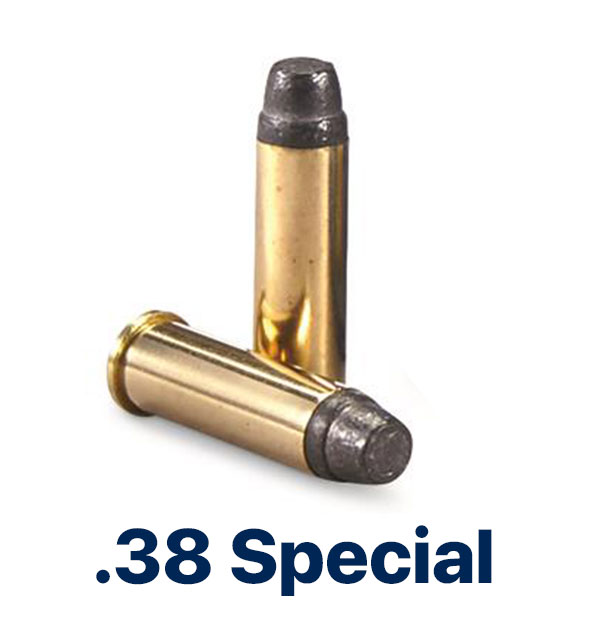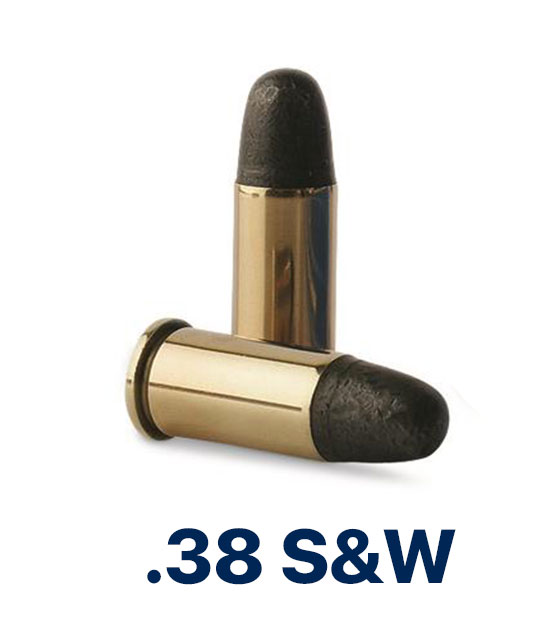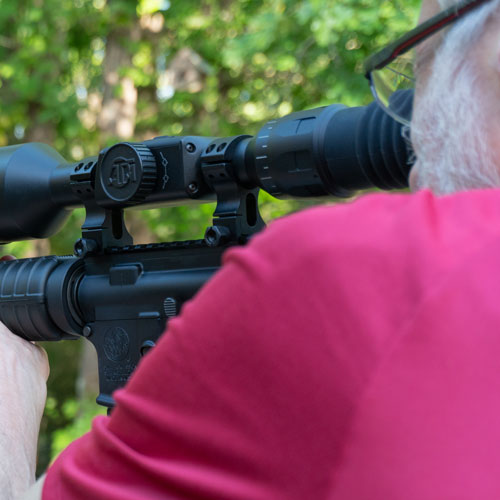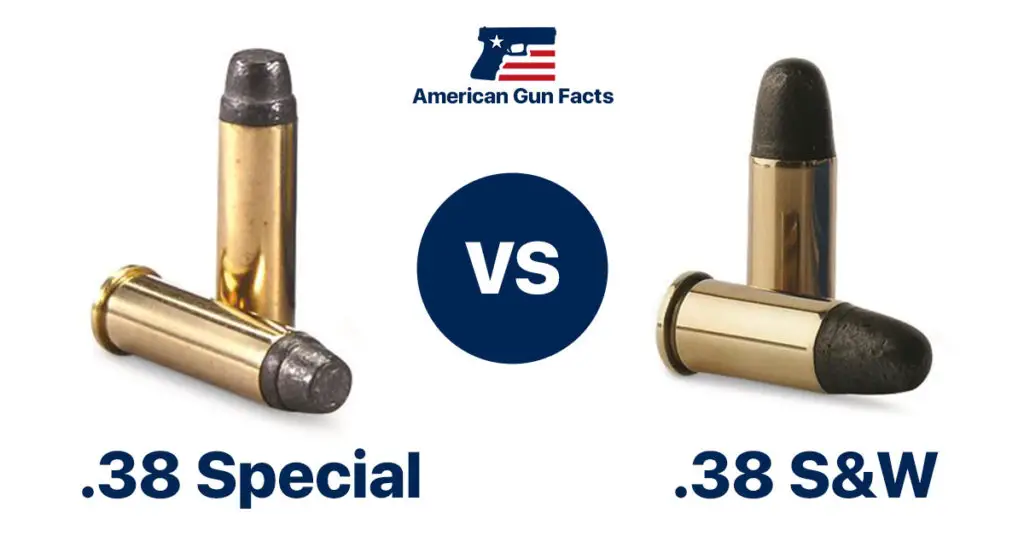Despite sharing the .38 name and looking similar, the 38 S&W and the 38 Special are two different ammo cartridges with several differences between them.
38 S&W vs 38 Special
The .38 Special and the .38 Smith and Wesson are not interchangeable. The .38 Smith and Wesson is larger in diameter than the .38 Special. That makes it physically impossible to chamber a .38 Smith and Wesson in a .38 Special gun in most cases. An exception to this is in cases of ammo that is out of spec, or if a cylinder is particularly worn in a revolver.
Because it is smaller, you can fit a .38 Special round into a .38 Smith and Wesson Gun. This is, however, a bad idea. If the gun is an auto-loader, it likely won’t function at all. You may be able to fit the smaller round in a revolver, but, in the unlikely case that you can manage to keep the round in place and the round goes off when struck with a firing pin, it will almost certainly rupture the case.
That would cause a lot of hot gas and shrapnel to form, and it has to go somewhere, likely into the shooter. Thus, even if it physically fits, it is in no way a good idea to attempt to interchange these cartridges. With that said, both of them are interesting and certainly have a place in the handgun world.
.38 Special Overview

The .38 Special was developed in the late 19th century as an update to the then-popular .38 Long Colt. Early on, the Special was a black powder cartridge but has since become more commonly found using smokeless powder.
Making use of the Long Colt case, the Special is a straight, rimmed cartridge that comes in a wide variety of bullet weights and types, but usually has a bullet that travels around 1,000 ft/second, and has a weight of around 115 grains.
Since it has been around for over a century, you’ll find the .38 Special made for just about anything and everything. A lot of folks like ball ammo for their revolvers for training, and hollow points for defense. While it might have a little less pep than modern 9mm, the .38 special has been a popular carry cartridge for decades.
The .38 Special has been one of the most common rounds in military and law enforcement sidearms for a century. Even after the adoption of newer rounds, like .45ACP and then 9mm, .38 special was common among soldiers, airmen, and detectives right up until the present.
| Parent case | .38 Long Colt |
| Case type | Rimmed, straight |
| Bullet diameter | .357 in (9.1 mm) |
| Neck diameter | .379 in (9.6 mm) |
| Base diameter | .379 in (9.6 mm) |
| Rim diameter | .44 in (11 mm) |
| Rim thickness | .058 in (1.5 mm) |
| Case length | 1.155 in (29.3 mm) |
| Overall length | 1.550 in (39.4 mm) |
| Case capacity | 23.4 gr H2O (1.52 cm3) |
| Primer type | Small pistol |
| Maximum pressure | 17,500 psi (121 MPa) |
What guns fire the .38 Special?
The .38 Special is the chosen cartridge of a number of interesting contemporary revolvers. Mostly, .38 Special gets used in small guns meant for concealed carry: its low recoil makes it a perfect round for such applications. Here, we’ll offer a few suggestions.
If the size isn’t a major issue for you, the Smith and Wesson 586 is a great shooting revolver that is tons of fun at the range, even if it is a little big and heavy for some people to concealed carry.
For folks looking for a more concealable firearm, the Colt Cobra is awesome: the quality of Colt’s revolvers is what made the company over a century ago, and they’re still great at it even if they have long since focused more on other types of firearms.
For more budget options, the Ruger LCR or Taurus Model 85 are also excellent .38 Special revolvers.
.38 S&W Overview

The .38 Smith & Wesson is even older than the .38 Special, with the former having been invented in 1877. While it never reached the sheer popularity of the Special, the Smith and Wesson take on a .38 round found important military contracts, especially among the British and their then imperial holdings. While it has fallen out of favor since, the .38 Smith and Wesson was in wide military use in both world wars, as well as the Korean war.
In terms of specifications, the .38 Smith and Wesson shoots a bullet of around 175 grains at somewhere around 700 ft/second, depending on the particular loading. Compared to the Special, the Smith and Wesson is a heavier, slower-moving round that functions on lower pressure. It’s for that reason that they’re not interchangeable.
| Bullet diameter | .361 in (9.2 mm) |
| Neck diameter | .3855 in (9.79 mm) |
| Base diameter | .3865 in (9.82 mm) |
| Rim diameter | .440 in (11.2 mm) |
| Rim thickness | .055 in (1.4 mm) |
| Case length | .775 in (19.7 mm) |
| Overall length | 1.240 in (31.5 mm) |
| Primer type | Small pistol |
| Maximum pressure | 14,500 psi (100 MPa) |
What guns fire the .38 S&W?
With the .38 Smith and Wesson, you’ll be using mostly historical firearms and their reproductions. If you can find one, the cartridge was meant for the Smith and Wesson Single Action.
One of the bigger sources of guns in a version of this caliber is the British Webley revolver, as well as their Enfield. For some easier-to-find guns in the US, Colt’s Police Positive also came in .38 Smith and Wesson.
What does .38 Mean?
When it comes to bullet naming, there’s not a great deal of consistency, and just because both of these are .38s, does not mean that they have many similarities. All the “.38” refers to is a rough estimate of the bullet of the diameter and is more of a marketing and sales term than anything else.
When it comes to picking ammunition, our suggestion is to follow exactly what the manufacturer recommends, or, in the case of surplus or historical firearms, consulting some good source of expertise.
Wrap Up
In this piece, we’ve covered two kinds of .38 ammunition, the Special and Smith and Wesson variants. While the two are not interchangeable, both have been around for over a century, while the former is much more popular than the latter.
While it’s still possible to find guns in 38 Smith and Wesson, you’re a lot more likely to find and carry guns in .38 Special, which is likely what you will be looking for if you’re looking to find ammo for a new production .38 revolver.

George has been an avid shooter for twenty years. He began shooting when he was gifted a Browning SA-22 for target practice. Now, as an academic, he combines his love of firearms and knowledge of history to write for firearms blogs and is still a frequent sight at the local range.

So, the article says the 38 Special “usually has a bullet that travels around 100 ft/second, and has a weight of around 115 grains”?
Fact check that velocity again, or was it a typo?
ah good catch! Missed a “0” on the end there.
I have an old break over revolver it has the three 1/4 inch long barrel made by us revolver company how ever I believe it is from the last 20’s and I have no idea what caliber it fires I did see that they have 2 different calibers they made a 32s&w and I’m not sure the other how can I tell
Go to harbor freight and get a cheap pair of calipers for $2. Then measure the the barrel. If it’s 0.312 inches (7.92mm) then it’s .32 S&W—the short cartridge. That’s important as there’s a .32 long which won’t fit in the cylinder and will be a waste of cash. Furthermore, you can remove the grips and check out the spring. A coil spring wound around a rod means it’s safe for smokeless powder (modern ammunition); a leaf spring means it’s black powder only (sold as “cowboy loads” but you can make your own with primed brass and a BP substitute like Goex). Do not fire modern smokeless ammunition in a US Revolver or Iver Johnson with a leaf spring if you enjoy having a hand and a face.